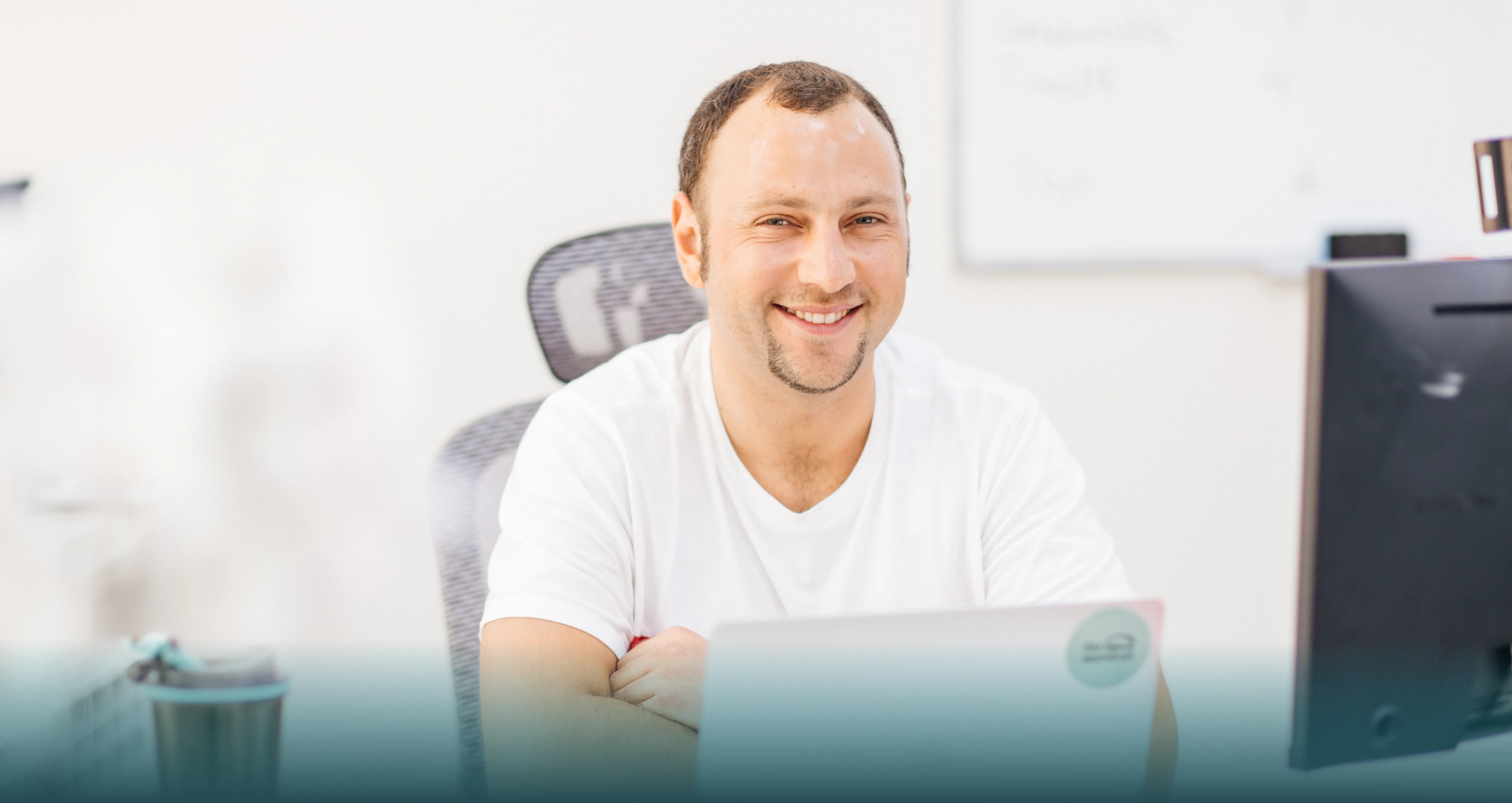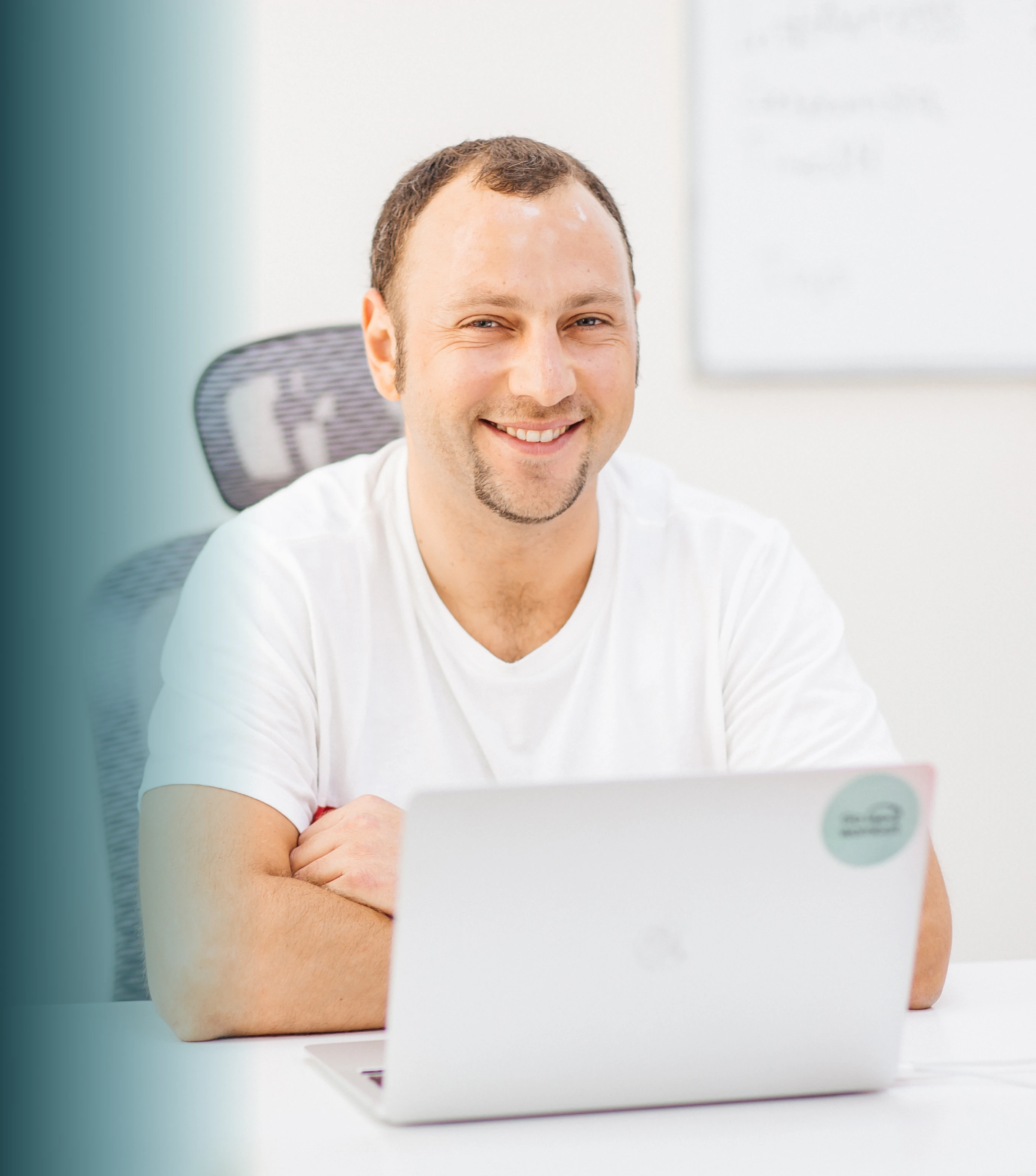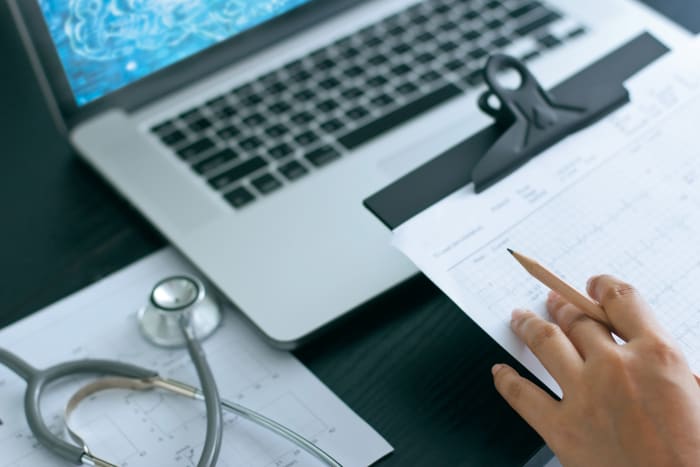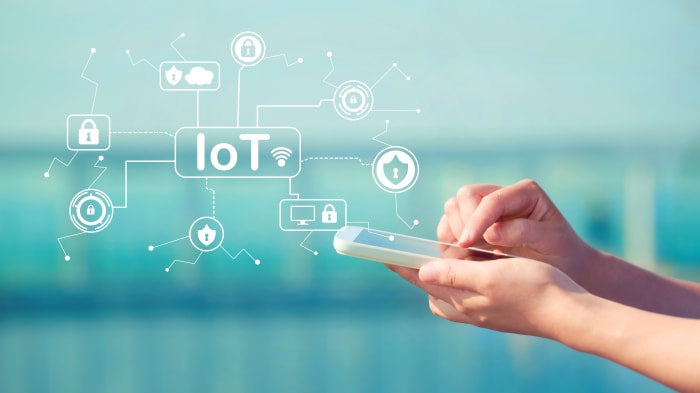The Internet of Medical Things: Benefits of IoT in Healthcare


According to the Precedence Research report, the market size of the internet of things (IoT) in healthcare was valued at 217.34 billion USD in 2022. This number is expected to skyrocket to 960.2 billion USD by 2030.
These figures speak for themselves about IoT technology in this sector. As a matter of fact, this industry created the perfect environment for a sub-category of IoT, which is known as internet of medical things (IoMT).
Modern healthcare systems require continuous integration and development of innovative solutions. Moreover, new technologies make it possible to improve patient service and significantly increase medical staff productivity.
IoT solutions can be advantageous for these applications and many more.
What is IoMT exactly? How can it be used? And, what advantages does it have? In this article, we’ll answer these questions
What is the internet of medical things?
When it comes to the internet of things, the healthcare sector is the area where it may prove the most useful. Why? Because the number of wearables is enormous and grows exponentially every year.
As the Global Market Insights report details, the market of wearable medical devices was valued at over 78 billion USD in 2022.
The internet of medical things (IoMT) is the infrastructure of smart devices, software, healthcare systems, and separate smart services. Like regular IoT tech, IoMT connects devices to the internet, allowing them to send, receive, and otherwise process information automatically.
IoMT improves and expands the healthcare field, providing remote assistance and more patient information. All medical IoT devices and solutions can be divided into these two broad types:
- Devices for hospitals and specialists who work there
- Devices for patients
Smart devices (like sensors, wristbands, and heart-rate monitors) collect and process data like overall health indicators, allergic reactions, and lab results. In addition, they help medical staff create personal electronic health records (EHRs) for each patient. You can learn more about EHRs and the steps to develop them in our detailed article.
Doctors can use the information from connected systems to treat patients more effectively, provide them with timely and appropriate care, and prevent exacerbations of chronic diseases.
Benefits of IoT in the medical sector

The use of IoT for medical devices has many advantages both for patients and physicians.
Let’s take a closer look
Enhanced diagnostics and treatment
Capsule endoscopy is a good example of how connected medical devices can improve diagnostics and treatment. In this scenario, the patient swallows a pill with an integrated mini-camera that takes pictures of the digestive tract.
Then, these pictures can be analysed by specialists for accurate diagnosis. Machine learning technology is also used to automate picture processing, allowing doctors to treat patients more effectively. Of course, this benefit is also valuable for patients since they have more opportunities for diagnostics.
Customer satisfaction
Besides using medical devices, IoT can also increase patient satisfaction and involvement in the treatment process, making it smoother and more comprehensive.
Connected medical infrastructure helps patients communicate with doctors more while they strive to monitor their health condition and medication regimen. This way, patients understand better how and why doctors make the diagnostic and treatment decisions.
Remote monitoring
Patients with chronic diseases may benefit from remote monitoring using medical wearables.
For example, wearable gadgets that monitor glucose levels in the blood have become a real magic wand for patients with diabetes.
These wearables send up-to-date information to their doctors. Not to mention, many other types of wearables have become quite helpful, allowing doctors to monitor all of their patients’ overall state of health at a distance.
Improved patient care
IoT healthcare devices for monitoring make it possible for physicians to evaluate the situation in real time and respond faster.
For example, if a patient’s level of cholesterol or glucose spikes beyond a certain point, these devices can notify doctors immediately so that they can take appropriate measures.
Staff monitoring and compliance with requirements
Hospitals and doctors’ offices are busy places, and managers cannot monitor everything and everyone.
IoT devices and software can automate compliance-monitoring processes, saving a lot of money on potential lawsuits and reducing compliance-related costs.
More business opportunities
Finally, if you are still deciding whether you need IoT in healthcare for your business, you should understand its benefits. IoT architecture opens new opportunities for business.
All the collected data is aggregated and located in the cloud, where machine learning algorithms can examine it and provide valuable insights.
Check out more in our in-depth article that explains how to boost your business with IoT software.
IoT software development is a challenging and tricky process. Let qualified professionals create it — contact Go Wombat.
Preventive care
For doctors, preventive care must be the main focus as it helps avoid severe consequences and new diseases.
Since IoT in medical devices provides highly accurate data about each patient, the healthcare sector can be revitalised, helping people live healthy lives and prevent diseases.
Overall healthcare costs reduction
Insurance companies are increasingly shifting to performance-based reimbursement of healthcare providers as healthcare costs rise. Thus, doctors must be able to prove that they help their patients in order to get compensation for their services.
Therefore, hospitals can reduce expenses by furnishing wearables and discharging patients from hospitals much earlier. This allows doctors to monitor patient health remotely. And, patients feel more comfortable at home, while doctors don’t need to make patients stay at the hospital, again reducing expenses.
Use cases of IoT in healthcare

IoT has great potential. We can see this in the examples of IoT use cases in healthcare listed in the section above. But, these are far from the only applications of IoT in healthcare.
The next section will cover all primary uses of IoT in the healthcare field.
Intelligent continuous glucose monitoring (CGM)
The development of smart systems was very impactful for diabetes patients, given how common the condition is and the fact that it requires continuous monitoring and proper treatment.
CGM is a tiny sensor patch inserted in human skin, usually on the belly or arm. It helps people with diabetes continuously monitor glucose levels in the blood and have up-to-date data every day.
Smart CGM systems send data about glucose levels to proprietary apps on Android or iOS. People can check the information quickly and identify any abnormalities. Doctors have access to the app data and all current information about the condition of patients.
Insulin pens
Insulin pens are another smart healthcare device that improves diabetes patients’ lives.
Smart pens for insulin and pen caps can automatically record the time, amount, and type of injected insulin. These can recommend the correct type of insulin injection at the right time.
These devices store all data on an app. They can also calculate the insulin dose and even record meals and sugar levels in the blood to monitor how meals and insulin intake affect glucose levels.
Automated insulin delivery
Yes, this use case is again about diabetes, but it is worth mentioning since automated insulin delivery opens up one of the most exciting fields of IoT in healthcare: the OpenAPS (Open Artificial Pancreas System) initiative with open-source code.
It is an insulin delivery system that not only measures glucose levels in the blood but also delivers insulin.
The automation of insulin delivery has many advantages that can change the life of people with diabetes. APS monitors a person's glucose level and automatically adjusts the insulin amount entering their system.
This device keeps glucose levels within a safe range, preventing extreme sugar spikes and lows. Automated insulin delivery also allows patients to sleep the whole night without the danger of low sugar (also known as nocturnal hypoglycemia).
Critical hardware monitoring
Today hospitals use many different electronic devices and hardware. But, it is necessary to remember that all hardware is prone to numerous risks like failures and power outages, so it should be monitored and maintained adequately.
Thus, there are IoT-driven solutions that monitor the functioning of critical equipment in hospitals, and they may alert hospital staff about any issues or malfunctions before they harm patients’ lives. The e-Alert solution from Philips is an excellent example of such a tool.
Connected inhaler
Many people in the world have asthma and other chronic respiratory diseases. Intelligent technologies help these people and let them control symptoms and treatment processes thanks to connected inhalers.
Propeller Health is a prominent manufacturer of smart inhalers. The company created a sensor that connects to an inhaler or Bluetooth spirometer. The sensor communicates with a mobile app and helps people with asthma understand the cause of symptoms as well as monitor the use of their inhalers.
The most significant advantage of a connected inhaler is the monitoring improvement — drugs are taken as scheduled and in the prescribed dose.
The sensor generates reports about inhaler use, and patients can share reports with physicians. In addition, doctors can check whether the inhaler is used according to the prescription. Patients can see statistics in mobile apps and understand how the inhaler improves their health.
Ingestible pills
Ingestible sensors are pills dissolved in the stomach yet send a signal to the wearables on the human body. Then, data is sent to the mobile app, confirming that the patient took the drug.
Apart from pills, there are ingestible sensors with a camera used for endoscopy so doctors can check the state of the gastrointestinal tract. Patients don’t need to undergo a painful traditional endoscopy, so it benefits both parties.
Parkinson’s disease monitoring
IoT devices in healthcare also help fight neurological diseases like Parkinson’s disease.
Although this disease remains incurable, there are ways to control it, some of which use IoT technology.
In 2018, Apple added Movement Disorder API to its Research Source Kit API interface. New API enabled an Apple Watch to monitor Parkinson’s disease symptoms.
Traditionally, symptoms are monitored by a doctor in the hospital with the help of diagnostic tests, and patients need to keep a diary to have in-depth statistics of improvements or declines. API helps automate this process and make it continuous. An iOS app may provide data in a graph, showing detailed statistics.
Do you have questions about software development? Go Wombat’s business development managers are at your service — contact us!
What systems can be implemented using the internet of healthcare things?
Using monitoring and navigation systems in medical institutions makes the healthcare sector safer and more comfortable for patients and physicians.
IoT for healthcare helps monitor the location of any object and lay a route to hospital rooms and offices, ensuring convenient navigation for medical staff.
In addition to this, some of the applications of IoT in hospitals and other facilities include:
Assets location monitoring
Staff and managers can monitor the location of equipment in real time and identify its current availability. This approach improves asset management and provides the administration with logistics optimisation inside the hospital.
Due to healthcare IoT devices, it also becomes much easier to prevent asset theft or loss. For example, a piece of medical equipment can use sensors to track its location and notify if it is taken out of the hospital.
Optimal navigation
Medical institutions usually have many rooms and offices, which makes it challenging to navigate it and find the necessary office quickly.
Navigation issues lead to patient dissatisfaction and time loss. The internet of things can provide the following solutions:
- Create digital maps with the locations of offices and rooms
- Perform step-by-step navigation around the hospital
- Build routes to any site within a medical institution
- Send personalised messages
Apart from optimisation for patients, medical staff can also use IoT solutions for higher efficiency. As a result, they can do their work more efficiently, allocate their duties wisely, and spend less time on routine tasks.
Besides that, IoT works with artificial intelligence, in turn contributing to higher optimisation. We have an article about AI in healthcare, and you can read more about its benefits there.
In addition, using IoT devices for healthcare will help managers improve internal business processes. You can increase management expertise and optimise multiple functions within your healthcare facility. And, you will be able to monitor the staff workload in order to create schedules that drive productivity.
Go Wombat and the internet of things
IoT business opportunities are numerous. Still, its application in healthcare proves most valuable because it helps save lives and modify the entire healthcare system.
That said, IoT software for healthcare must be created by experienced developers since it should comply with all the security requirements. Furthermore, it must be bug-free since any error may cost a lot (unfortunately, not only in terms of mone, but also impact patient health).
So, it’s essential to work with a qualified company like Go Wombat when building custom software for your healthcare facility.
We have experience in IoT-driven software development that includes complex algorithms. Want to see our work so far? Get in touch with us and we’ll be happy to share some examples.
Less talking, more action. Go Wombat is looking forward to your project ideas — contact us!
Unlock Success with Premium Software Development
Contact us


FAQ
How is IoT being used in healthcare?
The IoT use cases list includes intelligent continuous glucose monitoring (CGM). Also, there are insulin pens that connect to a mobile app and let users have up-to-date statistics. As well, automated insulin delivery frees patients from worrying about the right time to take insulin injections.
Additionally, IoT helps monitor the functionality of critical medical equipment to prevent malfunctions. Connected inhalers help patients with asthma to monitor their use and see the statistics. Ingestible sensors and pills allow doctors to monitor patients’ health from the inside without a physical appointment. Finally, IoT finds another important use in Parkinson’s disease monitoring, among other applications.
What is the impact of IoT in healthcare?
The internet of medical things in healthcare changes the entire sector, enabling real-time patient monitoring, better drug delivery, and more accurate diagnostics. Medical staff can monitor the assets in the hospital. IoT improves data management, automates patient care, and makes it possible to revolutionise the healthcare system substantially.
Who benefits from IoT in healthcare?
Both patients and physicians can benefit from IoT. Patients can use innovative technologies to improve their lives, leverage new painless treatment approaches, and have comprehensive information about their health.
Doctors can remotely monitor their patients’ collective health and take timely measures when necessary. Also, IoT contributes to medical staff productivity increases and the optimisation of working processes.
How can we help you ?







